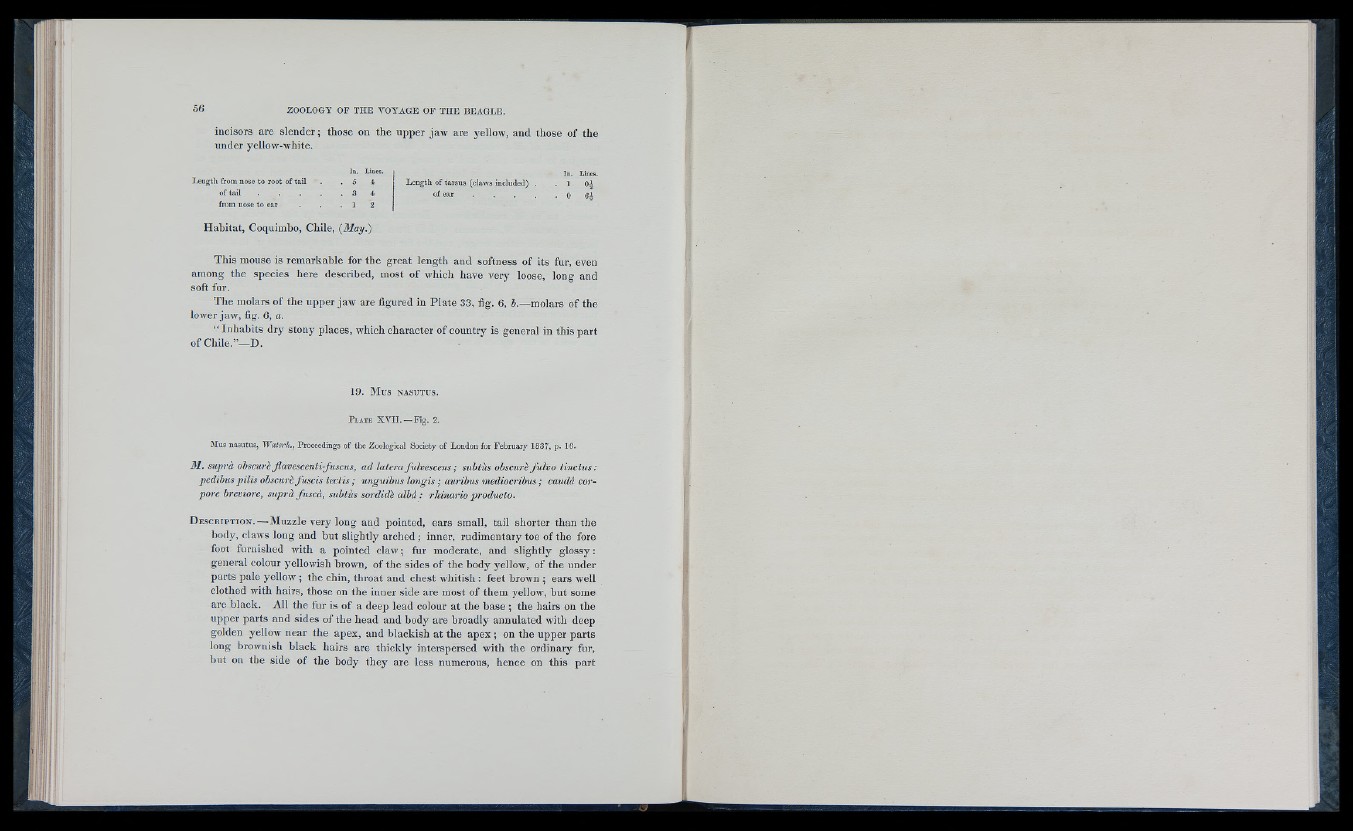
incisors are slender; those on the upper jaw are yellow, and those of the
under yellow-white.
liCiigth from nose to root of tail
of tail
from nose to ear
5 4
3 4
In. lanes.
Length of tarsns (claws included) . . 1 0^
of e a r ..................................................0 6^
Habitat, Coquimbo, Chile, (31ay.)
This mouse is remarkable for the great length and softness of its fur, even
among the species here described, most of which have very loose, long and
soft fur.
The molars of the upper jaw are figured in Plate 33, fig. 6, b.—molars of the
lower jaw, fig. 6, a.
“ Inhabits dry stony places, which character of country is general in this part
of Chile.”—D.
19. Mus NASUTUS.
P late X V I L — Fig. 2.
Mus nasutus, Waterh., Proceedings of the Zoological Society of London for February 1837, p. 16.
31. suprà obscurè Jîavescenti-fuscus, ad latera fidvescens; subtiis obscurè fulvo tinctus:
pedibus pilis ohscui'è fuscis tectis ; unguibus longis ; auribus mediocribus ; caudâ cor~
pore breviore, suprà fuscâ, subtiis sordidè albâ: rhinario producto.
D e s c r ip t io n . — Muzzle very long and pointed, ears small, tail shorter than the
body, claws long and but slightly arched ; inner, rudimentary toe of the fore
foot furnished w'ith a pointed claw ; fur moderate, and slightly glossy :
general colour yellowish brown, of the sides of the body yellow, of the under
parts pale yellow ; the chin, throat and chest whitish : feet brown ; ears well
clotlied with hairs, those on the inner side are most of them yellow, but some
are black. All the fur is of a deep lead colour at the base ; the hairs on the
upper parts and sides of the head and body are broadly annulated with deep
golden yellow near the apex, and blackish at the apex ; on the upper parts
long brownish black hairs are thickly interspersed with the ordinary fur,
but on the side of the body they are less numerous, hence on this part